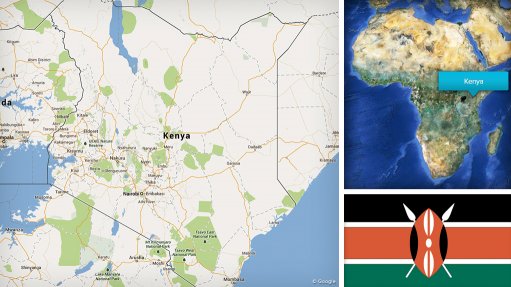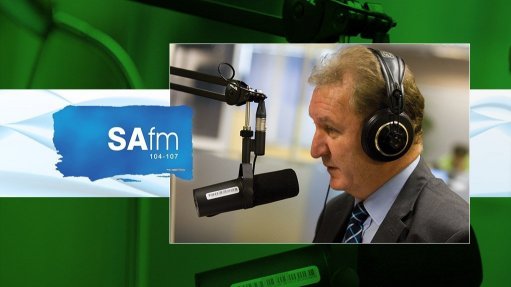Climate commission calls for revised IRP to upscale renewables allocation to 60 GW by 2030


PCC says the transmission grid should be moved to the centre of electricity planning
The Presidential Climate Commission (PCC) is recommending that the next edition of the Integrated Resource Plan (IRP), which is currently under review, caters for the building of between 50 GW and 60 GW of variable renewable energy by 2030, supported by co-located storage of between 3 GW and 5 GW, as well as gas peaking support.
It adds, too, that if anchored on a least-cost approach, South Africa should not build any new coal or new nuclear capacity, while also noting that renewables coupled with storage represents the only realistic technology options for resolving loadshedding in two to four years. This, given the long lead times involved for either coal (10 to 12 years) or nuclear (12 to 15 years).
The commission also concludes that South Africa should aim to build at least 8 GW of wind and solar yearly over the next two to four years to tackle ongoing power cuts, while investing substantially in expanding both the transmission and distribution grids, which have emerged as a key constraint to facilitating the construction of new renewables plants.
The recommendations arise from extensive modelling conducted in parallel with a series of stakeholder and technical engagements held over the past 12 months on South Africa’s future electricity system.
Executive director Dr Crispian Olver reports that the engagements and modelling arose in response to a request by Mineral Resources and Energy Minister Gwede Mantashe for the PCC to make recommendations into the IRP review process.
Mantashe told lawmakers this month that the updated IRP, which he initially indicated would be released by the end of March, would be released for public comment during the second quarter of this current fiscal year, implying a release between July and September.
"It is anticipated that the final revised IRP will be approved and Gazetted for implementation during the course of the 2023/24 financial year,” Mantashe said, while also indicating that a procurement process for new nuclear would be launched during the fourth quarter of the current fiscal year to March 2024.
The current edition of the plan, known as IRP 2019, is largely regarded to be out of date, with the demand, technology cost, and energy availability factor (EAF) assumptions having deviated materially since its publication.
The current plan has an allocation for the building of some 26 GW of variable renewables between 2019 and 2030, but is behind schedule.
For its part, the PCC has produced three interrelated reports, including stakeholder and technical reports, as well as one titled ‘Recommendations for South Africa’s Electricity Future’, which contains the commission’s IRP recommendations.
FOURTH NATIONAL SCOURGE
PCC commissioner Lebogang Mulaisi, who is also labour market policy coordinator at the Congress of South African Trade Unions, says the recommendations take account of the country’s current electricity crisis, which she describes as South Africa’s “fourth” scourge, along with poverty, inequality and unemployment.
“Electricity is critical for development and it is in the national interest to resolve the crisis in a scientific and transparent manner.”
Mulaisi also emphasises the importance of ensuring that the IRP is regularly updated given ongoing changes to technology costs and economic conditions.
Since the introduction of the first IRP in 2010, the plan has been updated only once, in 2019, and the PCC has recommended that it be updated at least every two years.
Besides recommending that South Africa eschew new nuclear and new coal, the PCC has indicated separately that it would be too costly and environmentally undesirable for South Africa to seek to refurbish existing coal plants.
However, it has accepted that a temporary extension beyond the currently scheduled decommissioning dates may be necessary for some units in a bid to ease the intensity of daily loadshedding.
“As a matter of principle, we cannot allow decommissioning of coal plants in a vacuum,” Mulaisi says.
“The onus is on us to have both the alternative power and to create the alternative employment opportunities . . . [and] a failure to roll-out new renewables will lead to the extension of coal plants, with consequences for cost and reliability.
“Given the aged nature of the infrastructure, we can’t afford to miss roll-out targets,” she adds.
The PCC report states that, at a minimum, South Africa should invest in a least-cost pathway and seek all opportunities to accelerate the transition.
PCC mitigation head Steve Nicholls also notes that, regardless of the assumptions tested, the least-cost anchor in all models is premised on building renewables, supported by storage and peaking plants.
The assumptions used by the PCC include higher demand growth than is currently the case under a scenario of low growth that is being further supressed by loadshedding, as well as an Eskom fleet EAF of 60%, rather than the 75% being targeted by the current board.
The PCC also assumes that South Africa will meet the mid-to-lower end of the decarbonisation commitments made through its Nationally Determined Contribution.
Nicholls says that, using such assumptions, no new coal or nuclear is built and gas is used for peaking at low utilisation rates.
The amount of renewables required could, he adds, be reduced if the country is successful in implementing energy efficiency at scale.
However, the PCC’s assumptions with regard to the uptake of energy efficiency are conservative, while the potential for offsetting emissions using natural carbons sinks is also assumed to be low.
The report also calls for the transmission grid to “be moved to the centre of electricity planning, both in the short and the long term.
“This would align with intentions to separate Eskom into three separate operating entities where the independent system and market operator would be responsible for electricity planning and the functioning of the market.”
Olver says he is hopeful government will take the PCC evidence-based recommendations seriously, but stresses that it is an advisory body and “at the end of the day, we have no control over what will be decided”.
The report has been shared directly with Mantashe and with President Cyril Ramaphosa, who has also distributed it to his Cabinet members.
Olver says he does not expect unanimous support within government for the PCC recommendations, but argues that there are definite areas where “we can converge”, including on the need to accelerate the building of the grid and on upscaling investment in the near-term on renewables and storage to address loadshedding.
“You’ve got to look at what can you get to market within the next two to three years and in a least-cost manner and that aligns pretty closely with what we are saying: it’s basically, wind, solar, batteries and some form of peaking support.”
Comments
Announcements
What's On
Subscribe to improve your user experience...
Option 1 (equivalent of R125 a month):
Receive a weekly copy of Creamer Media's Engineering News & Mining Weekly magazine
(print copy for those in South Africa and e-magazine for those outside of South Africa)
Receive daily email newsletters
Access to full search results
Access archive of magazine back copies
Access to Projects in Progress
Access to ONE Research Report of your choice in PDF format
Option 2 (equivalent of R375 a month):
All benefits from Option 1
PLUS
Access to Creamer Media's Research Channel Africa for ALL Research Reports, in PDF format, on various industrial and mining sectors
including Electricity; Water; Energy Transition; Hydrogen; Roads, Rail and Ports; Coal; Gold; Platinum; Battery Metals; etc.
Already a subscriber?
Forgotten your password?
Receive weekly copy of Creamer Media's Engineering News & Mining Weekly magazine (print copy for those in South Africa and e-magazine for those outside of South Africa)
➕
Recieve daily email newsletters
➕
Access to full search results
➕
Access archive of magazine back copies
➕
Access to Projects in Progress
➕
Access to ONE Research Report of your choice in PDF format
RESEARCH CHANNEL AFRICA
R4500 (equivalent of R375 a month)
SUBSCRIBEAll benefits from Option 1
➕
Access to Creamer Media's Research Channel Africa for ALL Research Reports on various industrial and mining sectors, in PDF format, including on:
Electricity
➕
Water
➕
Energy Transition
➕
Hydrogen
➕
Roads, Rail and Ports
➕
Coal
➕
Gold
➕
Platinum
➕
Battery Metals
➕
etc.
Receive all benefits from Option 1 or Option 2 delivered to numerous people at your company
➕
Multiple User names and Passwords for simultaneous log-ins
➕
Intranet integration access to all in your organisation



















